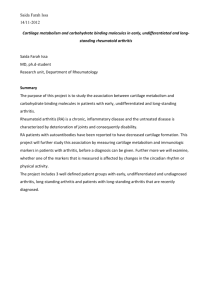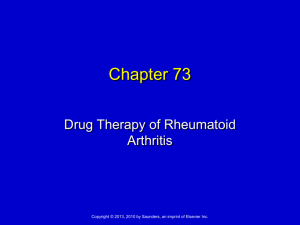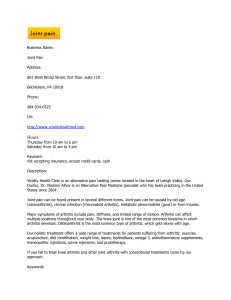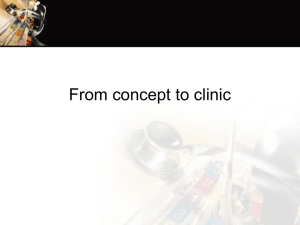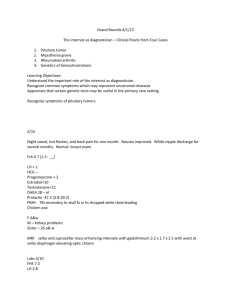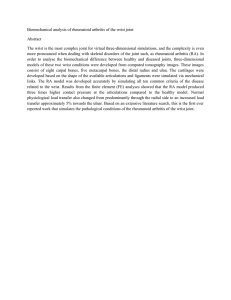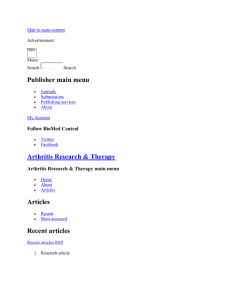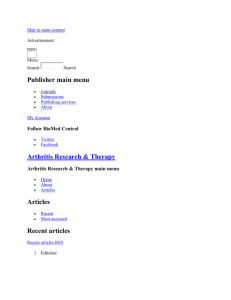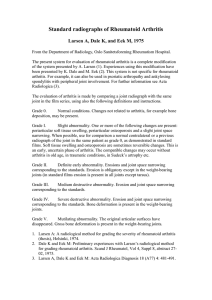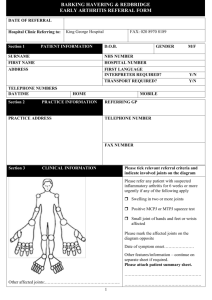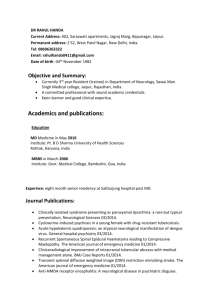Answers for Practice Test Questions
advertisement
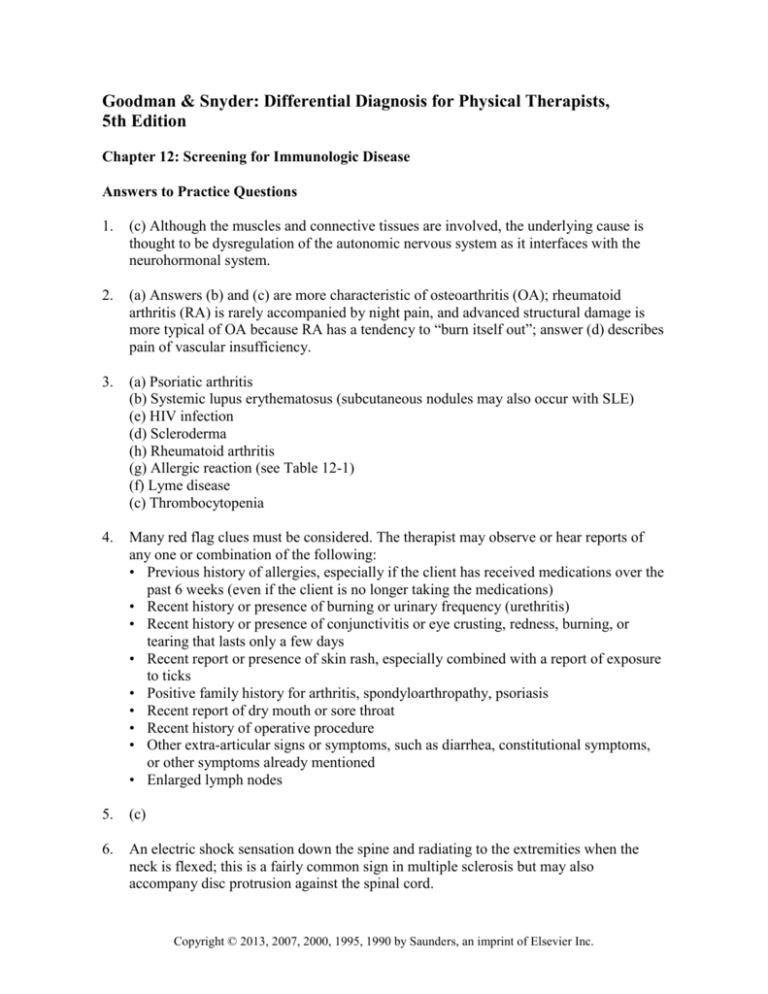
Goodman & Snyder: Differential Diagnosis for Physical Therapists, 5th Edition Chapter 12: Screening for Immunologic Disease Answers to Practice Questions 1. (c) Although the muscles and connective tissues are involved, the underlying cause is thought to be dysregulation of the autonomic nervous system as it interfaces with the neurohormonal system. 2. (a) Answers (b) and (c) are more characteristic of osteoarthritis (OA); rheumatoid arthritis (RA) is rarely accompanied by night pain, and advanced structural damage is more typical of OA because RA has a tendency to “burn itself out”; answer (d) describes pain of vascular insufficiency. 3. (a) Psoriatic arthritis (b) Systemic lupus erythematosus (subcutaneous nodules may also occur with SLE) (e) HIV infection (d) Scleroderma (h) Rheumatoid arthritis (g) Allergic reaction (see Table 12-1) (f) Lyme disease (c) Thrombocytopenia 4. Many red flag clues must be considered. The therapist may observe or hear reports of any one or combination of the following: • Previous history of allergies, especially if the client has received medications over the past 6 weeks (even if the client is no longer taking the medications) • Recent history or presence of burning or urinary frequency (urethritis) • Recent history or presence of conjunctivitis or eye crusting, redness, burning, or tearing that lasts only a few days • Recent report or presence of skin rash, especially combined with a report of exposure to ticks • Positive family history for arthritis, spondyloarthropathy, psoriasis • Recent report of dry mouth or sore throat • Recent history of operative procedure • Other extra-articular signs or symptoms, such as diarrhea, constitutional symptoms, or other symptoms already mentioned • Enlarged lymph nodes 5. (c) 6. An electric shock sensation down the spine and radiating to the extremities when the neck is flexed; this is a fairly common sign in multiple sclerosis but may also accompany disc protrusion against the spinal cord. Copyright © 2013, 2007, 2000, 1995, 1990 by Saunders, an imprint of Elsevier Inc. Answers to Practice Questions 7. (f) 8. (b) 9. (d) 12-2 10. (b) Symptoms of hives, itching, periorbital edema, and gastrointestinal involvement may occur with allergic reactions, but these do not usually require immediate medical treatment. The possible exception may include facial hives accompanied by constriction of the throat or upper respiratory symptoms (listed in answer [b]), leading to an inability to breathe. Copyright © 2013, 2007, 2000, 1995, 1990 by Saunders, an imprint of Elsevier Inc.







